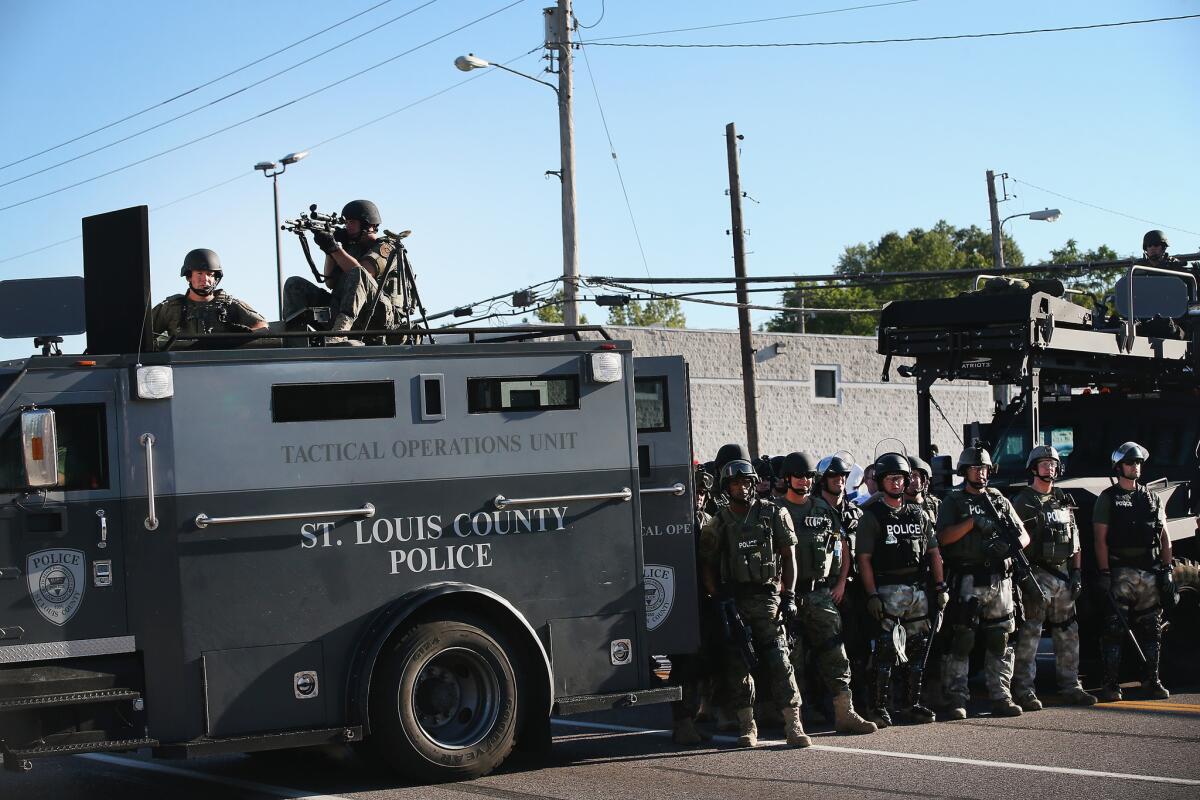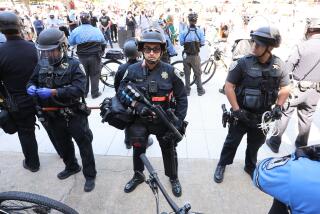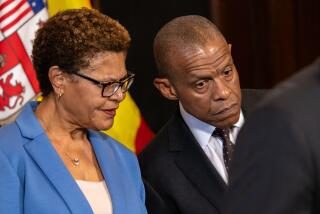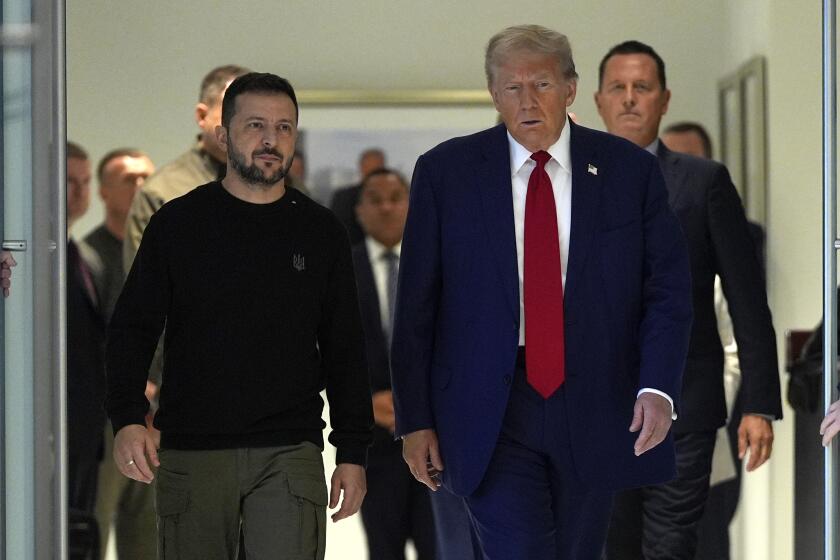Seattle police chief during WTO unrest appalled by Ferguson violence

Reporting from SEATTLE — The first thing Norm Stamper thought when he saw images of the protests in Ferguson, Mo., following the police shooting of an unarmed black man was straight out of a folk song — “When will we ever learn?”
“My reaction was, ‘Please learn from my mistakes, from what I did and did not do during the week of WTO,’ ” said the former Seattle police chief, who presided over a law enforcement response to widespread demonstrations in 1999 that was vilified around the globe for its heavy handedness.
“Don’t tear gas nonviolent and not-threatening protesters,” Stamper continued. “And for God’s sake, don’t bring dogs out … It’s a throwback to the ‘60s and Bull Connor. The imagery sucks. It was really painful to see the images I saw from Ferguson.”
Stamper knows whereof he speaks. Fifteen years ago, when the World Trade Organization met in this leafy, progressive outpost, tens of thousands of anti-globalization protesters and labor union activists shut down the heart of Seattle’s city center.
The police response was swift, dramatic and iron-fisted. Officers wielded tear gas, batons, stun grenades and pepper spray. There were more than 600 arrests. The mayor called for curfew and a 50-block no-protest zone. Law enforcement agents in riot gear marched through the city streets.
“The biggest mistake in my 34 years of law enforcement was that we used a military response to a domestic situation, a military tactic that was absolutely unnecessary,” Stamper told the Los Angeles Times. “Why did we do it? It was the cop in me that supported my staff and believed that, if we needed to get emergency assistance to someone in medical distress, we wouldn’t have been able to do it.
“The cop in me should have been overruled by the chief in me,” Stamper said. “I blew it. The effect was to heighten tensions, not de-escalate tension .… A whole lot of others would not have acted as they did if we didn’t act as we did.”
The parallels to Ferguson are painfully obvious. Days of demonstrations followed the Saturday night shooting of Michael Brown, an 18-year-old black man who had allegedly robbed a convenience store, by Ferguson police Officer Darren Wilson.
Largely white law enforcement agencies in this largely black suburb of St. Louis — a small town of 21,000 where racial tensions run high — pulled out the military gear, tear gas and camouflage, armored vehicles and police dogs, rubber bullets and sharpshooters.
It wasn’t until Gov. Jay Nixon dispatched the State Highway Patrol on Thursday to take over security in Ferguson that the incendiary situation began to calm down. Highway Patrol Capt. Ron Johnson, who is black and grew up in Ferguson, was tapped to lead the effort.
“My new hero is Ron Johnson,” Stamper said. “What he has done is textbook conflict management, conflict resolution. It’s textbook interpersonal competence. The fact that he comes from the community, that he is African American, has achieved a high rank in the state patrol, he’s got instant street credibility.”
On Friday, Stamper decried what he calls the increased militarization of local police forces, which he called “a problem of massive proportions.”
Since the advent of the war on drugs, and particularly since the terrorist attacks of Sept. 11, 2001, he said, “police officers are looking more, sounding more, acting more like soldiers than domestic peacekeepers…That translates into an occupational force. In a democratic society, a pluralistic and free society, police officers need to be a part of the community, not apart from it.”
Stamper said there was a place in modern policing for the kind of military equipment that many police forces have gotten in recent years from the federal government. But small towns with tiny police forces should not have arsenals that rival big cities’.
Instead, he called for regional SWAT teams that are staffed with carefully picked and thoroughly trained officers.
He remembers being deputy chief of the San Diego Police Department in 1984 when James Oliver Huberty opened fire in a San Ysidro McDonald’s, killing 21 people and wounding 19 others.
“He’s firing shots everywhere and attempting to keep the police at bay,” Stamper recalled. “We positioned a SWAT sharpshooter a distance away. We give him a green light, and he kills Huberty.
“What if before we did that, we had an armored personnel carrier at our disposal? We could have driven it into the fast food eatery and perhaps reduced the carnage.”
Follow @marialaganga for national news
More to Read
Sign up for Essential California
The most important California stories and recommendations in your inbox every morning.
You may occasionally receive promotional content from the Los Angeles Times.











